Conducting Research Among U.S. Hispanics Online
Posted by Elena del Valle on August 21, 2007
By Deborah Gonderil
Vice president, Quantitative Client Services
Phoenix Multicultural

Deborah Gonderil, vice president, Quantitative Client Services, Phoenix Multicultural
A. Characteristics of Online Adult Hispanics Compared with Total Hispanic Population
56% of the adult Hispanic population had online access in 2006, an increase of 10% over the level in 2001.
The Hispanic online population skews heavily toward:
• English Dominant and Bilingual
• Better- Educated
• Younger
• Upper Income
• U.S. Born
If these characteristics match the demographics of the target for the research, online research can be considered.
Most of the demographics that index highest for Hispanic online access are the demographics with the lowest incidence: upper income, college graduate, English speaking, U.S. born. Unless the target demographic is very heavily weighted toward these demographics, using online interviewing is not recommended at this time, regardless of the lower cost.
The younger Hispanics at this time are the only viable demographic for online testing without supplementing for missing demographics. More than two-thirds of the Hispanic 18-29 year olds are online. Many marketers are targeting this demographic, and online testing will be efficient.
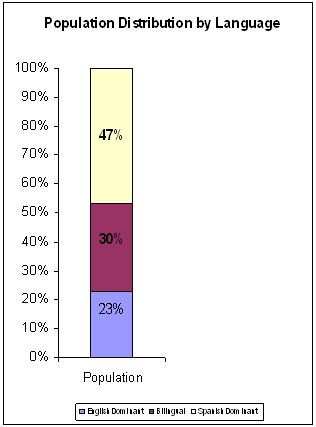
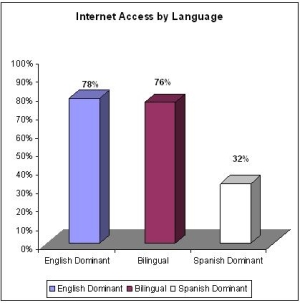
The Spanish Dominant segment is by far the largest in the U.S. Hispanic population. However, they have by far the lowest incidence of internet penetration.
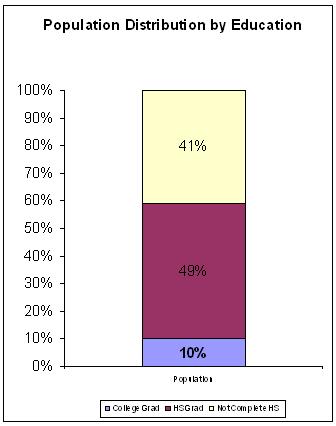
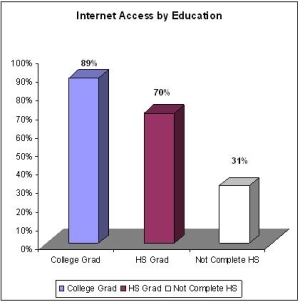
Roughly two out of every five U.S. Hispanics 18+ report having not completed High School. Meanwhile, only 31% of U.S. Hispanics without a High School degree are online.
Reach Hispanics online today with
“Marketing to Hispanics Online” audio recording
Identifying and characterizing the booming Hispanic online market



Joel Bary, Alex Carvallo and Matias Perel
Find out about
• The 16 million Latino online users
• Latino online users by gender
• What they do online
• Their language preferences
• How to reach Hispanic urban youth online
• What affects their online behavior
• What influences their purchases
Click here for information on “Marketing to Hispanics Online”
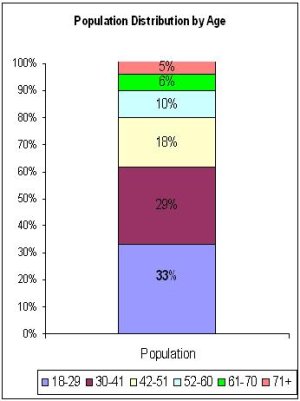
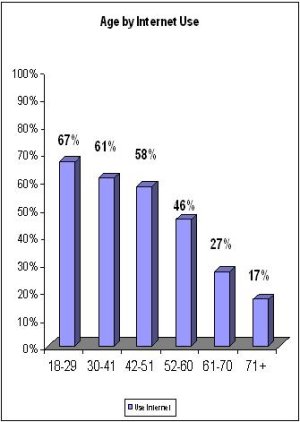
The two younger Hispanic age groups – 18-29 and 30-41– are the largest segments of the Hispanic population. Their Internet usage incidence is also much higher than the other age groups.
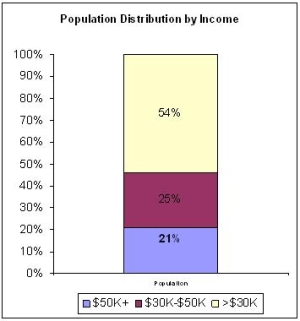
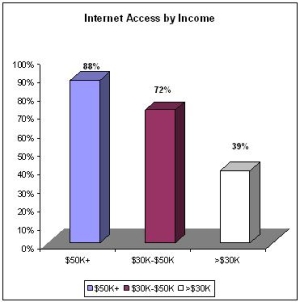
The majority of U.S. Hispanic households report an annual income of less than $30,000 per year. U.S. Hispanic households with incomes of less than $30,000 per year report the lowest incidence of internet penetration at only 39%.
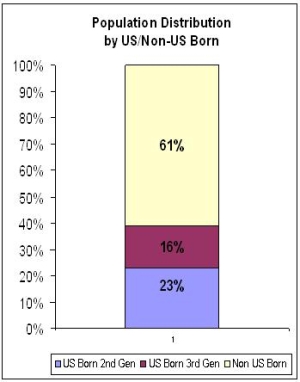
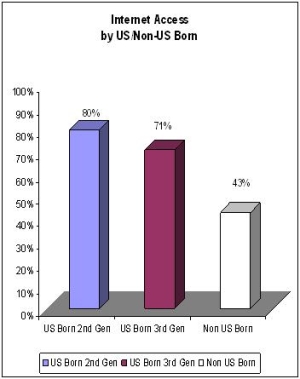
The Mexican-origin population – the largest among Hispanic population – and the Central Americans have lower incidence of online access than do Hispanics from other countries/regions.
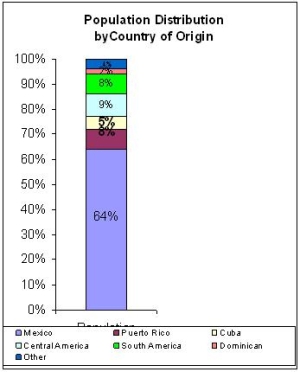
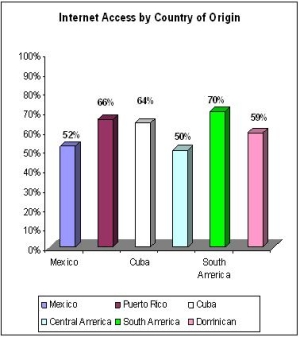
Source: Pew Hispanic Center: Latinos Online, published March 2007
B. Sources for Hispanics Online
Three leading research companies doing panel research among the General Market maintain Hispanic panels. To a very large extent, those Hispanic panel members are English speakers and are surveyed in English. Further, there are several key limitations to these panels that should be considered. For example, our experience has shown that the majority of existing panels do not allow for the ability to analyze results on a market-level read and many other attributes, such as level of acculturation, cannot be set up as quotas resulting in a more generalized set of data.
In addition, due to the limited nature of the Hispanic online segment, the anticipated benefits of cost and time savings of online research may not be realized. To best assess the actual field performance, when doing business with these Hispanic panels, it is essential to determine what the demographics are, what level of cooperation they get when a survey is sent to them.
A Note on Data Weighting
To compensate for lower levels of representation among the least acculturated Hispanics, researchers may consider weighting those respondents to their total population levels. However, it should be noted that unacculturated Hispanics that are online may not be representative of their unacculturated peers. Due to the low incidence of online access and Internet usage behavior among this segments, unacculturated Hispanics online should be considered as outliers and weighting their responses may skew responses – particularly given the size of this segment, estimated at 44% of the total Hispanic population.
1. Panel Research Companies with Hispanic Panels
2. Data Bases
a. Research suppliers who maintain files on respondents with online information
b. Data bases for purchase
There are other sources for online Hispanics. Research suppliers who conduct interviews on CATI or in person and qualitative research companies who maintain data bases of their potential recruits may/should keep files on which respondents have internet access Those files can be called up to provide Hispanics with online Hispanics.
There are data bases available for purchase from a variety of sources that have names of Hispanics with online access. These data bases are of the type offered as mailing lists for direct mail or telemarketing. Careful scrutiny of the sources for these lists, the frequency and types of updating and quality control, references from customers is recommended.
C. Combo Methodology Options
If the target Hispanic is not the predominantly upscale Hispanic with internet access that can be reached with online panels or data bases, a combo methodology may be recommended.
All methodologies described below require an inspection and analysis of the demographics obtained in the online segment. The second segment of the research is then structured to complete the demographics missing from the online sample relative to the target.
1. Online Interviewing by Intercept
Respondents can be recruited to a central location at which computers are available for the interview. The same interview that was used for Hispanics online is used for the central location interviewing.
• Respondents who are comfortable reading the interview and entering their responses do so.
• Respondents who are reluctant/unable to complete the interview on their own are given the survey by and interviewer who reads the questions and enters the responses.
2. CATI
Respondents can be interviewed with a standard CATI methodology. Quotas can be established to complete the demographics missing from the online sample.
3. Benefits and Barriers of Supplemental Interviews Conducted Online with Intercept Interviewing and CATI
Barriers to Supplemental Interview, regardless of Methodology
• Once methodologies differ, there is always a possibility that differences in response may be driven by the fact that questions are asked and responded to in different ways.
Thus, caution must be exercised in analysis. If Hispanic Spanish speakers are interviewed in person or on CATI and Hispanic English speakers are interviewed online, the differences in the data may reflect actual differences in attitudes/awareness or may simply be a function of the difference in the methodologies.
Even when both surveys are administered online, the fact that one is completed in the privacy of a home or office and the other is administered in a more public setting in the presence of an interviewers may impact the types of responses given.
• Quota sampling to complete demographic categories missing from the online can be complicated to program and monitor.
Deborah is the vice president of Quantitative Client Services at Phoenix Multicultural. In this role, Deborah leads the design and development of strategic analyses for all quantitative research and syndicated studies at Phoenix Multicultural. Prior to joining Phoenix Multicultural, Deborah was the Senior Vice President of Synovate Diversity for nearly fifteen years.
“Search Engine Marketing to Hispanics” audio recording

Presenter Matias Perel, founder and president, Latin3
Find out about
- The 16 million Latino online users
- Types of online access among Hispanics
- Latino online user language preferences
- What they do online
- Usage by age
- Income levels among Hispanics who visit the Internet
- Internet use by Hispanics
Click here for information on Search Engine Marketing to Hispanics












Good Afternoon,
My name is Christy, and I’m doing research for a client and gathering information for them. Here is a breakdown of what I am seeking:
Demographic Information
1- Hispanic Monthly Impressions – How many to your site?
2- Age
3- Income
4- Location (Top 5)
5- Education
6- Gender
I thank you in advance for any information that you are able to provide.
Kindly,
Christy